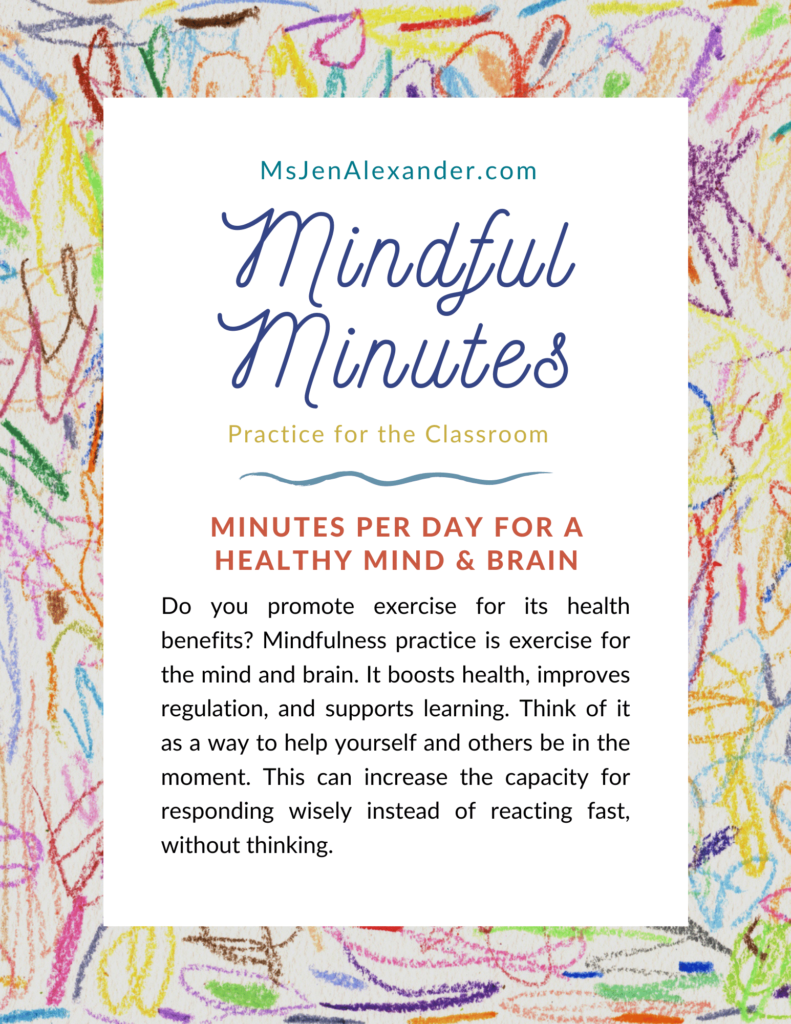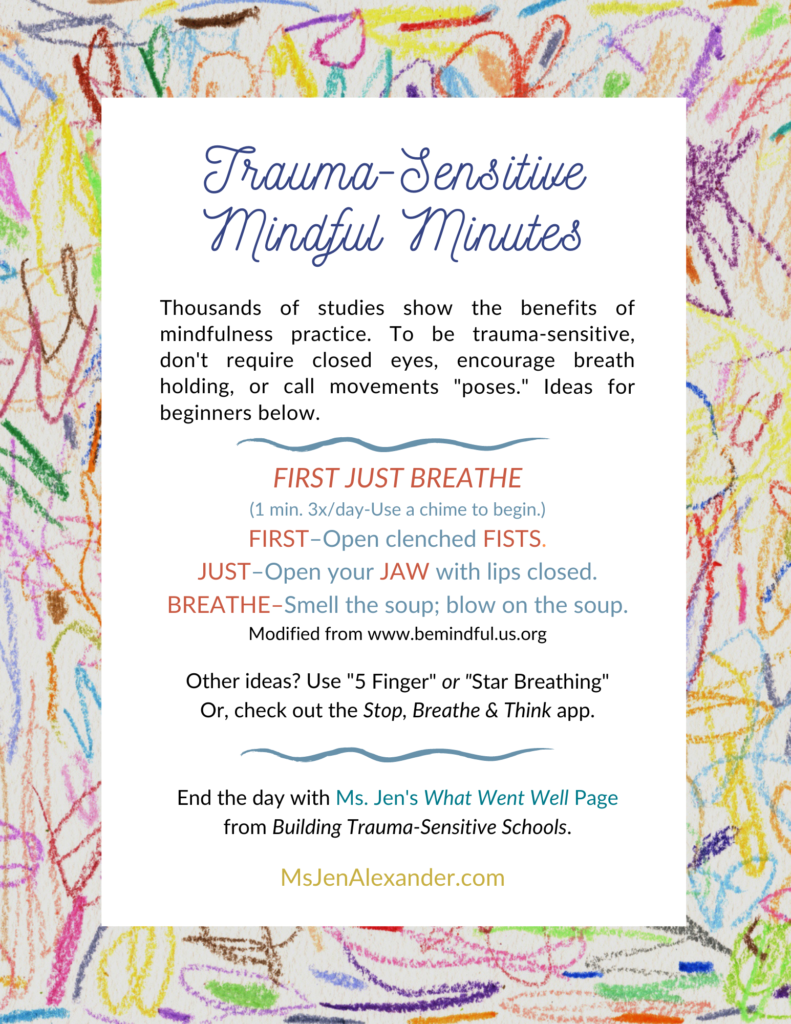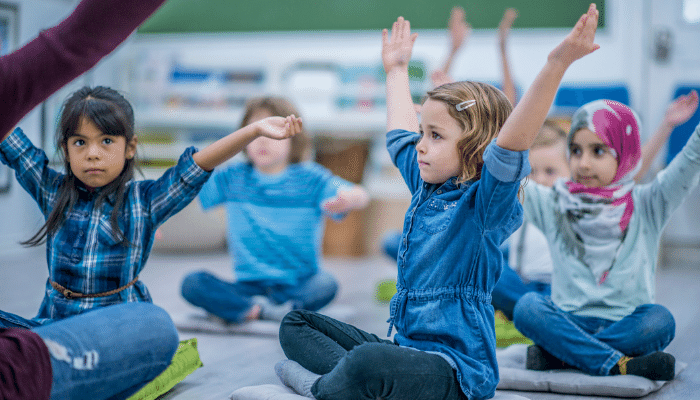Daily trauma-sensitive mindfulness practice at school can help youth and adults get regulated. When I introduce the concept of mindfulness to students of any age, I describe it as practicing a calm body, caring heart, and focused mind.
When I introduce the concept of mindfulness to students of any age, I describe it as practicing a calm body, caring heart, and focused mind.
If you’d like to consider including mindfulness practice in your time with students, begin with as little as minutes per day. You don’t have to do any exercise for a long period time for it to be beneficial. Rather, repeated, short practice creates a rhythm of being present. It encourages thoughtful action and increased compassion too.


Check out the infographics I made for you to learn a few options for getting started. Always keep in mind that while breathing and gentle movements can make a positive difference, there is also power in mindful doing. In fact, traumatized youth may prefer mindful doing as compared to a focus on breathing or body awareness, and there are good reasons for that based on the effects of trauma. Keep reading for specific trauma-sensitive considerations and suggestions. Then, make decisions with input from your students about what is best in your setting. Always remember that what’s helpful for one person may not be helpful to someone else. Timing matters too.
Trauma-Sensitive Mindful Minutes
Importantly, not all mindfulness practices are sensitive to the needs of traumatized people. I learned several of the tips below in discussion with Traci Ludwig, a trauma-responsive yoga instructor and licensed clinical social worker. The list includes practices that I have personally found helpful in my work with folks who have histories of trauma. In fact, that’s my first suggestion. Encourage your students to reflect on what helps and what doesn’t so they can make their own decisions. Choice is at the heart of trauma-sensitive practices because it’s empowering. It also honors consent. Always offer multiple options. For example, I always include one like, “If none of these seem helpful, feel free to think about what you’d like to do first after school today.”
- Some students may feel safer having their backs to a wall (and without other people behind them). Encourage everyone to find a spot that feels comfortable for them.
- Don’t require anyone to close their eyes. Say, “Some folks might want to close their eyes, while others might want to look down or focus on something they like to see instead. You get to decide what’s best for you.”
- Do not suggest any exercises where people hold their breath.
- Don’t use the word pose(s) as this word is sometimes used during childhood sexual abuse.
- Again, many benefit from mindful breathing and *doing* more than meditation or yoga (e.g., coloring or drawing, drumming, walking, or dance).
Encourage your students to reflect on what helps and what doesn’t so they can make their own decisions.
Resources
Click below to download a pdf version of the two infographics above.
Click here to check out a resource for Star Breathing from Coping Skills for Kids that I have used it youth of any age.
To Learn More…
- Read this article by Emily Deruy (2016) from The Atlantic called Does Mindfulness Really Work in Schools? to better understand the research about mindfulness practice in schools,
- This ASCD update by educator Christina Torres (2019) is excellent and explains the limitations of mindfulness in schools. It’s entitled Mindfulness Won’t Save Us. Fixing the System Will.
- To dive deeper into understanding how mindfulness is not always trauma-informed, read Katrina Schwartz’s (2019) piece Why Mindfulness And Trauma-Informed Teaching Don’t Always Go Together.
- This Q&A with Dr. Angela Rose Black details why voices of color are so important when it comes to mindfulness and other practices. I highly recommend it.
What mindfulness resources and suggestions do you find helpful as a trauma-sensitive educator? Please share in the comments so others can learn from you!
Just breathe,

#BuildingTraumaSensitive Schools #GetRegulated #Mindfulness #Breathe #TakeGoodCare



